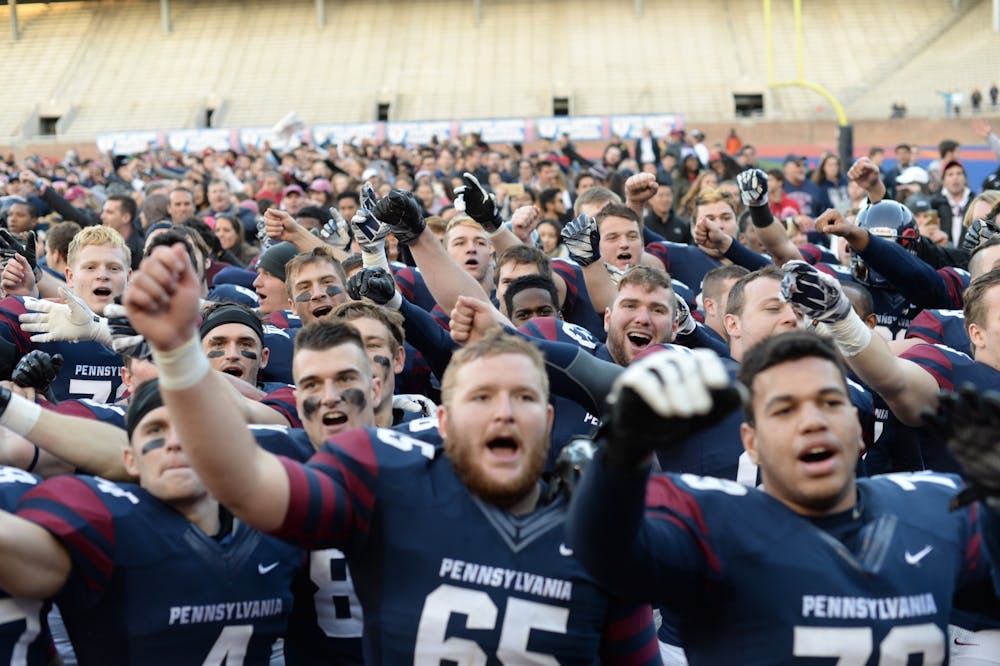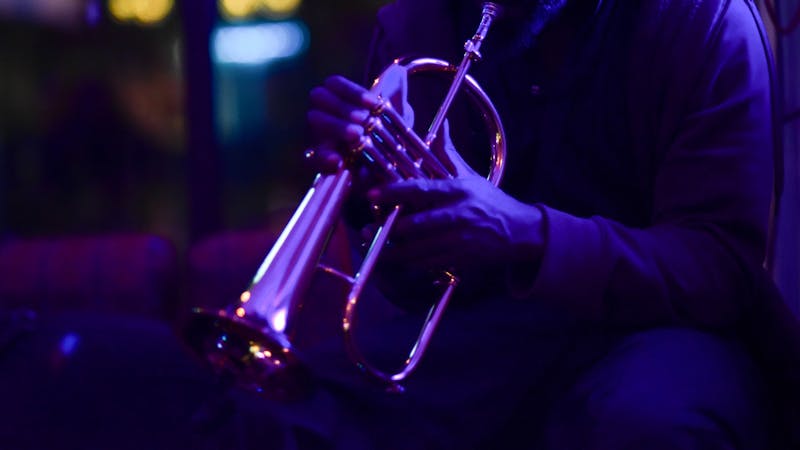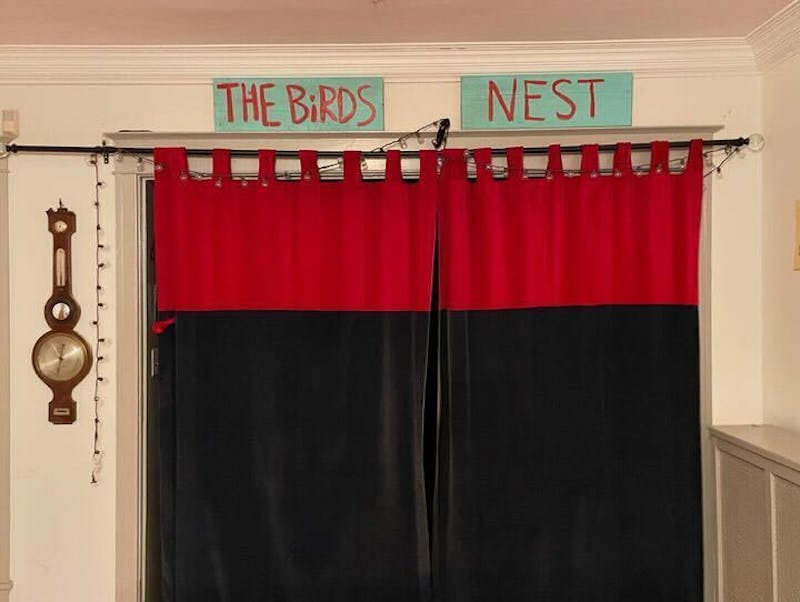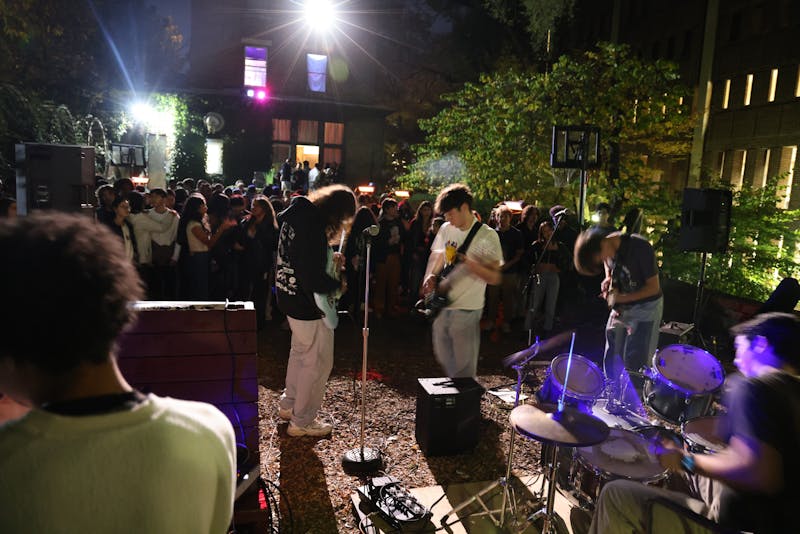Three weeks ago, Penn football opened its season with a game against Colgate, but strangely, I knew only three people who attended the game—two of whom left during halftime. They didn’t leave because Penn was losing—in fact, by halftime, the Quakers had a significant lead—the problem was there was no excitement around the game and no sense of energy in the crowd, especially among current students.
There is an electric feeling that comes from college football games: It’s your college’s colors unfurling across the stadium, the smell of spilled beer wafting through the autumn air, and, most importantly, the singing of your college’s fight songs. In response to these anthems, the crowd will sing louder than the blare of the band’s brass instruments, roaring so rowdily that the music played over the speakers drowns beneath the weight of the crowd's unified voice.
If you think about colleges with soaring football cultures, the first thing that comes to mind is the music: The twang of “Rocky Top” has become synonymous with the University of Tennessee, “Dixieland Delight” can’t be thought of without envisioning a screaming crowd at a University of Alabama game, and you can’t picture the winding roads of West Virginia in “Take Me Home, Country Roads” without that road ending up at a tailgate at the University of West Virginia.
Of course, Penn has several anthems: Written in 1897 and 1898 respectively, “Hail! Pennsylvania” and “The Red and Blue” are classic Penn traditions which resonate especially strongly with alumni. These beloved favorites have great meaning for generations of past Penn students, but our generation of Penn students doesn’t feel the same connection to these songs. At sports games, current students mumble and mess up the words as they sing “Hurrah for the Red and the Blue," while alumni sitting next to them proudly know the lyrics by heart.
The connection we feel to the thousands of other people in the crowd when these fight songs play has a science behind it. The nostalgia felt—and the anticipation of future nostalgia—is heavily triggered by music. “When you're listening to music that you really like, brain circuits involving parts of the brain called the amygdala, ventral tegmental area, and the nucleus accumbens come online,” Daniel Levitin says, a neuroscientist at McGill University who released a book on the science behind music and evoking emotions last month. These parts of the brain work to process emotions such as energy, memory retrieval, and pleasure, Levitin says in an interview with NPR.
Music is more than just a trigger for the production of your own brain chemicals, because that process is occurring for everyone else in the stadium as well. “Neurons in the brain even fire with the beat of the music, which helps people feel connected to one another by literally synchronizing their brain waves when they listen to the same song,” Levitin says. In these big college football stadiums, the thousands of people standing shoulder–to–shoulder shouting the same lyrics are internally on the same wavelength. This shared connection from the music creates an amplified atmosphere of community among everyone in the stadium.
These fight songs don't need to be tethered to traditions from a century ago—many schools are more known for their unofficial fight songs than their official ones. The University of Wisconsin has adopted House of Pain’s '90s hit “Jump Around” as their unofficial fight song ever since 1998. From the instant the first note of the song starts, it sets off a reflex in everyone at the game: People shriek and raise their hands with excitement, the stadium rocks up and down like a trampoline, and everyone chants the chorus as it echoes through Madison. “Kernkraft 400” can be heard playing in the smallest crevices across the United States, and you are certain to hear people chanting “We are Penn State” at any local bar.
So, if Penn is serious about wanting to boost the attendance and energy at its games, why not adopt a newer fight song in addition to "The Red and Blue?"
It’s not as if we lack the talent: We have a booming DJ culture present on campus and students who are passionate about a great variety of music. We could take a song such as Elton John’s “Philadelphia Freedom” and add a Penn–inspired spin on the lyrics, as other schools have done in the past, or even create a new song directly related to Penn. Rapper and Penn alumnus Hoodie Allen's (W '10) satirical song “UPenn Girls,” as well as the freestyle he performed while a student at Penn, could be great starting points for this.
The spectacle of Penn football games relies not just on the grandeur of Franklin Field, but also on our ability to fill this historic stadium. After all, it's the people surrounding you that make these games so memorable and spellbinding. Lucky for us, we have a huge stadium—we just need to start reviving it.






